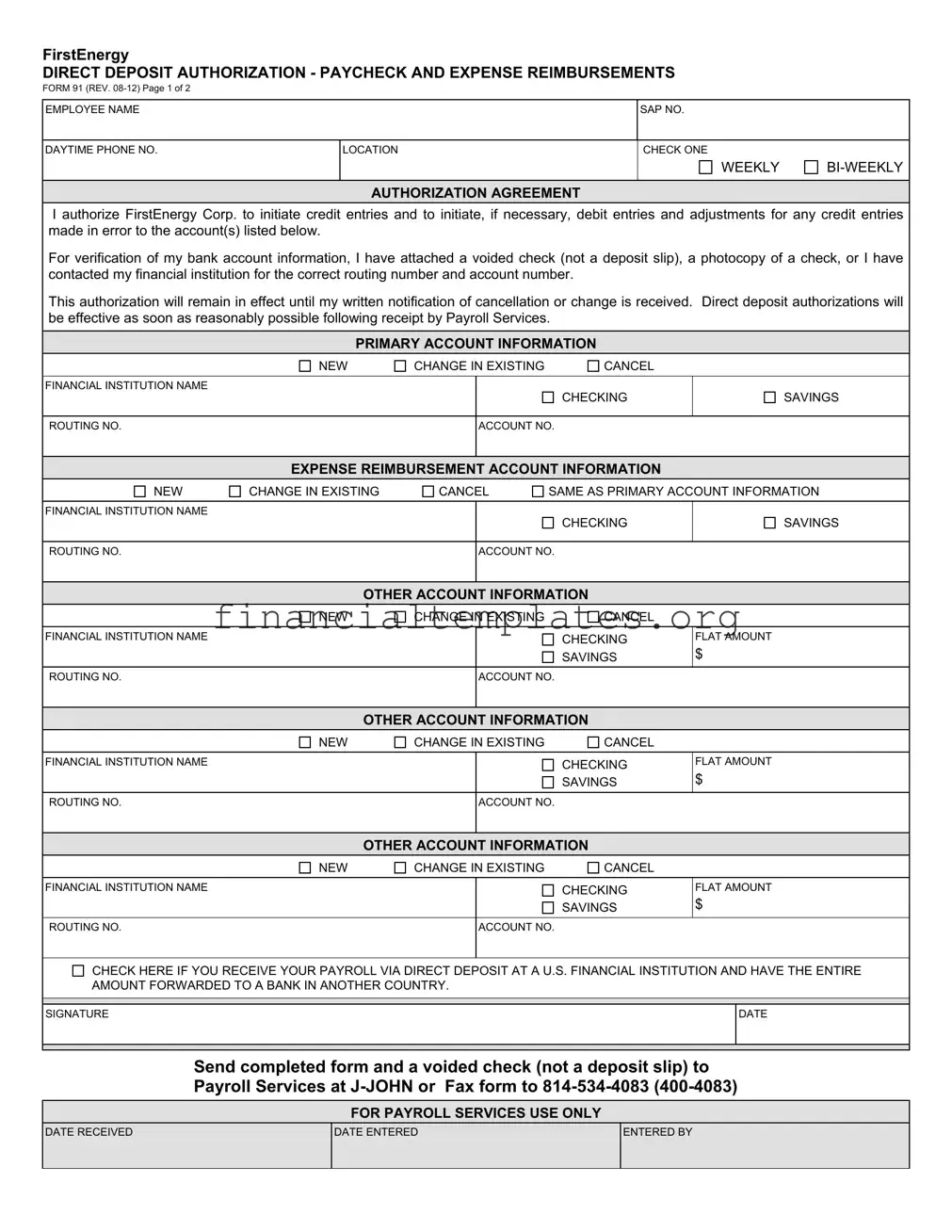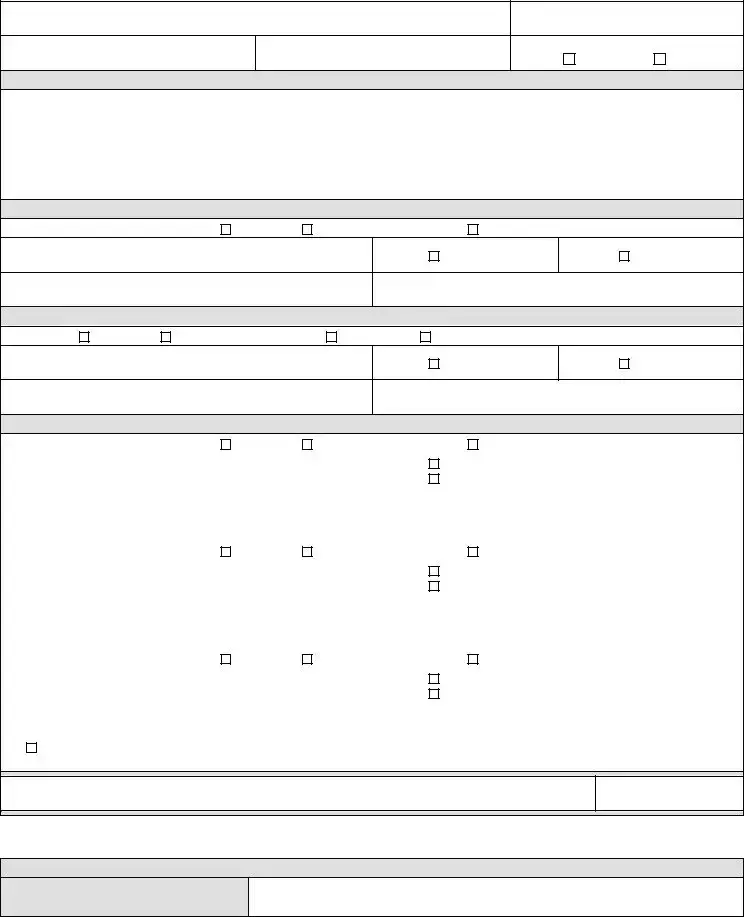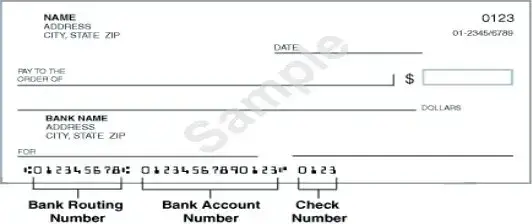The FirstEnergy Direct Deposit Authorization form, while unique to its company, shares similarities with several standard financial and employment documents. One such document is the generic Employee Direct Deposit Authorization form. This form, like the FirstEnergy version, allows employees to provide their banking details for receiving their paycheck through direct deposit. Both require the employee's bank account information, including the routing and account numbers, and both need authorization to start, change, or cancel this direct deposit service. The key goal is to streamline the payroll process by depositing funds directly into designated accounts.
Another related document is the Expense Reimbursement Form, often used in organizations to manage and process work-related expenses incurred by employees. Similar to the expense reimbursement section of the FirstEnergy Form 91, these forms typically collect banking information to facilitate the reimbursement through direct deposit. This similarity underscores the importance of efficient financial transactions between employers and employees, focusing on reimbursing out-of-pocket expenses promptly.
The Bank Account Verification Form is also akin to the FirstEnergy form, particularly in the aspects of verifying bank details. Employers or financial institutions use these forms to ensure the accuracy of banking information provided by an individual, thus preventing errors in direct deposit transactions. Like the verification step suggested by attaching a voided check in the FirstEnergy form, the verification form serves a critical role in confirming bank account specifics to deter fraud and mistakes.
The Payroll Direct Deposit Cancellation Form shares similarities with the cancellation section of the FirstEnergy form. Employees who wish to stop receiving their pay via direct deposit use these forms to notify their employers of their intent to revert to paper checks or to switch their direct deposits to different bank accounts. Both the FirstEnergy form and a typical cancellation form make it necessary for employees to inform their payroll departments in writing to cease the direct deposit transaction.
A Change of Bank Account Form for Direct Deposit, often used when an employee wants to update their banking details due to a change of banks or account types, mirrors the change authorization in the FirstEnergy document. Both require the employee to provide new banking information and authorize the transfer of the direct deposit service to the new account, ensuring uninterrupted access to their paychecks and expense reimbursements.
The Authorization Agreement for Automatic Deposits (ACH Credits) is similar because it involves an individual granting a company or organization permission to make electronic deposits into a specified account. Much like FirstEnergy's form, this agreement is vital for setting up automated payments or deposits, requiring detailed account information and authorization to initiate these transactions.
The Direct Deposit Setup Form for Government Benefits closely parallels the FirstEnergy form by requiring recipients of government benefits to provide their bank account details to receive their benefits electronically. Although the payor differs (government vs. employer), the essence of providing accurate banking information and authorization to enable direct deposits remains the same.
An Employee Payroll Information Form often includes a section for direct deposit preferences alongside other personal and tax information. While it covers a broader range of topics, its direct deposit section converges with the purpose of the FirstEnergy form by collecting crucial banking details from employees to facilitate electronic wage payments.
Lastly, the Vendor Direct Deposit Authorization form, used by businesses to set up direct deposits for their vendors, parallels the FirstEnergy form in its essence of streamlining financial transactions. By allowing for direct deposit into specified accounts, these forms alike aim to expedite payments and enhance the efficiency of monetary transfers, albeit in a B2B context compared to the employer-employee dynamic of the FirstEnergy form.
Each of these documents, though tailored to different contexts and parties, shares the common goal of utilizing direct deposit as a secure, efficient means of transferring funds. From payroll and expense reimbursements to government benefits and vendor payments, the principles of authorizing and managing electronic funds transfers are universally applicable, underlining the versatility and reliability of direct deposit services.


